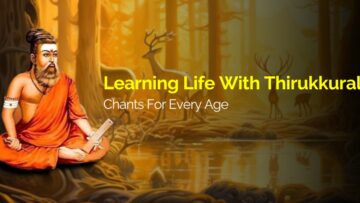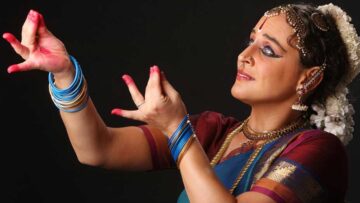The Indica conference on Jain traditions was held on March 2-3 at Chandraprabha Dhyana Nilayam in the beautiful city of Jodhpur. While thunder, rainfall and winds lashed outside, participants spoke about the ascetic and inward contemplation traditions of Jainism. It was also a time to reflect on the environmentally conscious aspects of Jain living, its compassionate ethos, and the religion’s long-standing advocacy for animal protection.
Jain philosophy shares numerous ontological, epistemological, and eschatological concepts with Vedic traditions. These parallels, as fascinating as the distinctive features of Jainism, demonstrate a profound cultural harmony at familial and religious levels, inclusive of temple rituals and iconography.

CONFERENCE HIGHLIGHTS
The purpose of this conference was to celebrate the rich heritage of the Jain tradition and its integrated contributions to Bharat’s philosophical dialogue, communal rites, every day practices, and sacred artistry, highlighting both its distinctive and shared heritage. The curators for the conference were Dr. Nagaraj Paturi, Dean of IKS, INDICA, and Dr. Arti (Bothra) Kochar. Rashtra Sant, Sri Chandra Prabh Sagar Ji Maharaj brought gravitas to the conference.
Speaking on the “Mutual Respect for Dharmic Paths – Jainism and Hinduism”, Shri Vipul Kocher documented incidents from the lives of monks and sadhus, both Jain and Hindu, showcasing instances of mutual respect and discussions on similarities between Jainism and Hinduism. Notable figures such as Shri Vijay Shanti Surishwar ji, Srimad Rajachandra, Swami Ramdas, Shri Ramkrishna Paramhansa, and Dr. V. H. Date were examined for their contributions to fostering mutual understanding between the two paths. He spoke of historical encounters, emphasizing the shared values and respect that have existed between Jainism and Hinduism over the centuries.Top of Form

Jain philosophy has contributed extensively to diverse Indian Knowledge Systems throughout history. Jainism, an ancient non-theistic religion, spread throughout the country influencing other religions. The paper on “Jain Traditions in the Ancient-Medieval Kerala: An Epigraphical Exploration” by Shri Arjun K V delves into the historical penetration of Jainism into Kerala, tracing its roots back to the 3rd century BCE.” Focusing on the medieval period (8th to 16th century AD), the research examines the socio-economic dimensions of Jain religio-cultural groups in Kerala, highlighting the contributions of Jains to the formation of society and culture.
This research addresses the historical significance of Jain traditions in ancient-medieval Kerala, focusing on the experience of Bhakti through ritual art forms. It seeks to understand the nature of Jain culture during the Early-Medieval period and the life structure of Jains. The study delves into the exclusiveness and collusiveness of Jains as a religio-cultural group in medieval Kerala, especially in the context of the anti-Jain and Buddhist content of the temple-centered Bhakti movement.
“The study holds significance in unraveling the spiritual goals of Jainism, emphasizing liberation from the cycle of rebirth and the attainment of moksha through nonviolent living. It recognizes the valuable contribution of Jains to vernacular literature, specifically in Ardha Magadhi, making Jainism more accessible to people in different regions. Understanding Jain traditions is crucial for appreciating their impact on the cultural and historical landscape of Kerala,” says the author.

Also looking at the Jain influence across Bharat were Shri Rushab Bhandari who spoke on the “Jain Concept of Tirth and the significance of Shri Parvat (Shrishailam) in Jain Literature.”
Dr. Hansmukh Seth, Associate Curator, City Palace Museum, Udaipur, Rajasthan and Deepika Ravjani, research Scholar, Fine Arts Dept, IIS (Deemed to be) University, Jaipur, Rajasthan spoke on the Sacred Artistry of Jain Temples in the Mewar Region. Their paper delves into the sacred artistry of Jain temples in the Mewar region, specifically focusing on the 10th-century Jain temple of Ahad and Jain sculptures discovered through excavations. The dominance of Jain followers during the rule of Rawal Allat from the Guhila dynasty is evident in the historical and archaeological findings. “The primary focus is on understanding the vivid imagination and artistic sensibilities that reflect the glorious indigenous traditions of the Mewar region.”
In the paper, “Jain Evidences from Excavations at Chandrawati (Sirohi, Rajasthan)” by Dr. Hansmukh Seth – Associate Curator, The City Palace Museum, Udaipur – and Prof. J.S. Kharakwal – Director, Sahitya Sansthan, J.R.N. R. V. University, Udaipur – talk about Chandrawati, a significant historical and medieval site in Rajasthan, which underwent excavations from 2013 to 2016, revealing numerous temples, fortifications, and a vast collection of sculptures. Jain evidences were discovered during these excavations, shedding light on the rich heritage associated with Jainism. “The majority of the sculptures date back to the period between the 10th and 13-14th centuries, indicating a prosperous phase for Chandrawati.”
Scholar in Jain studies, Dr Kamini Gogri looks at the unique story of “Ravan: The Future Jain Tirthankara.” Rāvaṇa, known as the eighth Prativāsudeva in Jain tradition, is explored in this paper from a Jain perspective, distinguishing it from the portrayal of Ravana in Hindu tradition. Rāvaṇa is also referred to as Laṅkeśa or Daśamukha (‘ten-faced’) and is part of the Prativāsudevas, antagonists instigating Vāsudeva in Jain legends.

“The paper delves into the Jain narrative, detailing Rāvaṇa’s lineage, including his mother Ratnaśravas and Kaikasī. The character is associated with the Vāsudevas and Baladevas, embodying the theme of powerful yet evil antagonists in Jain mythology. The story unfolds in the Triṣaṣṭiśalākāpuruṣacarita, a twelfth-century Śvetāmbara work by Hemacandra. Additionally, the paper explores Rāvaṇa’s family, including his brothers Bhānukarṇa and Bibhīṣaṇa, and sister Candraṇakhā (or Śūrpaṇakhā). Rāvaṇa’s encounters with the Vāsudevas and his ultimate demise are narrated in the Jain Ramayana, offering a unique perspective on this well-known character.”
Dr. Alok Kumar Verma Assistant Professor School of Sciences and Humanities (History) Maharishi University of Information Technology Noida, UP, spoke on “Jainism and Buddhism: Integrated Contributions in Bharat’s (Indian) Culture”. This paper delves into the integrated contributions of Jainism and Buddhism to the cultural landscape of Bharat (India). Examining the historical context of Mahavira and Siddhartha Gautama’s times, one gets a sense of the shared roots of these ancient traditions in the socio-religious milieu of ancient India. It emphasizes the ethical and moral frameworks introduced by Jainism and Buddhism, centered around non-violence (ahimsa), compassion, and the pursuit of truth. The study investigates the interconnected contributions of these traditions, which emerged in the 6th century BCE, shaping the ethos, values, and social fabric of the Indian subcontinent. It analyzes the symbiotic evolution, shared origins, and enduring impact of Jainism and Buddhism on Bharat’s cultural heritage. Dr Alok also spoke about the influence of Jain and Buddhist art, architecture, and literature on Bharat’s aesthetic sensibilities.

Art and Architecture are an important testament to the glory of Jain culture. Lajja Bipin Bhatt, Ph.D. Scholar, Dept. of Archaeology, Sahitya Sansthan, J.R.N. Rajasthan Vidyapeeth, Udaipur spoke on the topic “Ranakpur Jain Temple: A Case Study with Special Reference to Kalpvriksha Botanical Ornamentation.” This paper on the Ranakpur Jain Temple, emphasises on the Kalpvriksha botanical ornamentation. “Art history goes beyond merely observing art as objects; it serves as a means to comprehend the societies contemporary to the art’s creation.”
The paper highlights the contribution of ancient texts, such as Samrangansutradhar, Aprajitprutchha, Devtamurti prakaranam, Anshumanbheda, Mayamatam, Diparnav, Kshairarnav, Bhagavatisutra, Vishanudharmottar Puran, and literature from master builders like Sompuras and K.F. Sompura. “By understanding the interactions between performativity and normative aspects of temple architecture, the study emphasizes the fluidity of form, discreet adaptation, and adoption of various features from temple architectural texts and practices.”

In his paper “From Renunciation to Riches: The Jain Merchant Legacy in Bharat’s Economic and Cultural Tapestry”, Shri Sunil Kumar, interestingly shifts the narrative of Jainism from a singular focus on asceticism to illuminate the intricate role played by Jain merchants in shaping Bharat’s economic and cultural landscape. “Rooted in Jain principles of non-violence (ahimsa) and non-attachment (aparigraha), Jain merchant communities are explored as vanguards of wealth, custodians of culture, and patrons of philanthropy.”
The study investigates historic trade networks, mercantile guilds, and financial institutions pioneered by Jains, revealing the dynamic interface between Jain ethical precepts and commercial enterprise. By tracing the journey of Jain merchants through various historical epochs, the paper offers a profound commentary on the symbiotic relationship between faith and trade in Indian history.
In the paper “Anekantavada: A Special Jain Episteme for Embracing Diversity and Shunning Monoculturalism”, Muhammad Tanim Nowshad explores the historical significance of Anekāntavāda in fostering human gnosis and insight, emphasizing its role in developing a comprehensive worldview that encourages respect for diverse beliefs and philosophies. The episteme is positioned as a counterforce against monoculturalism and parochial outlooks, serving as a potential catalyst for global harmony.

Achyut Kant Jain in the paper – “Understanding Causality in Jaina Philosophy: Unpacking the Principles of Sadāsatkāryavāda and Bhedābhedavāda” – explores the Jaina philosophy’s concept of Sadāsatkāryavāda, reconciling substance and mode, challenging Indian perspectives on causality. The study covers various aspects, including the duality of reality, Kundakundācarya’s harmonization of conflicting views, and the relationship between the eternal soul and temporal body. Emphasizing the interdependence of all phenomena, the analysis highlights Jainism’s unique perspective on causality, fostering a comprehensive and inclusive approach to understanding existence and its intricate patterns.
Shri Munishri Jambuvijaya spoke on “Jambuvijaya and the Jaisalmer Bhandar” focusing on the dedicated efforts of Munishri Jambuvijaya, a significant scholarly Śvetāmbara Jain monk of the 20th/21st century, in cataloging and preserving Jain and non-Jain manuscripts at the Patan and Jaisalmer Bhandars. Renowned for critically editing numerous Sanskrit works and teaching foreign scholars about Indian philosophy, including Hindu, Buddhist, and Jain traditions, Munishri Jambuvijaya undertook the challenging mission of scanning and digitizing manuscripts in various libraries.

“Jambuvijaya’s efforts opened up a vast collection of Indian texts and manuscripts to the scholarly world, reflecting his life’s work and devotion to understanding knowledge. This initiative attracted devoted individuals who worked diligently to digitize these manuscripts, offering valuable insights into Jain monkhood and its relationship with the preservation of knowledge.”
For those seeking to understand the term atheism in the context of Jain traditions, the paper – “The Adaivika Nature of Jainism as per the Tattvārtha Sūtra” by Professor Konrad Elst delves into the Adaivika claim, examining the term “deva” and its implications both in general and within the context of the Tattvārtha Sūtra. The analysis explores how Jainism, by not explicitly aligning with Vedic traditions, is perceived as atheist and compares this understanding with Western perspectives on atheism.







